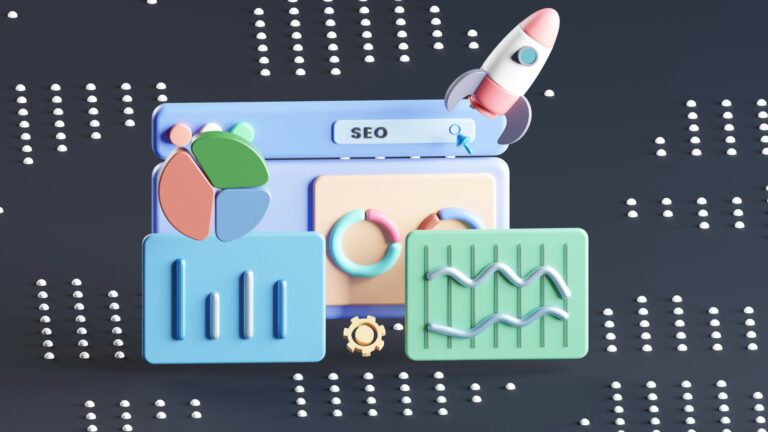Key Takeaways:
- Inbound beats outbound: Attract, don't interrupt. Inbound marketing wins by delivering value directly tailored to your audience's needs, establishing your brand as a trusted resource.
- Navigate the buyer's journey: Tailor your content to guide potential customers through each stage of their journey, from awareness to decision, enhancing engagement and trust.
- Craft a winning strategy: Set clear, measurable goals, deeply understand your audience, and continually refine your approach based on data-driven insights to maximize impact.
Inbound marketing is a game-changer for modern B2B companies. At its core, it’s all about attracting your ideal clients by offering them something valuable – insights, solutions, and answers to their challenges – rather than pushing your message out to the masses and hoping it sticks. Unlike traditional outbound methods, like cold calls or ads that interrupt, inbound marketing earns attention by delivering tailored content to the right audience at the right time.
For B2B executives and marketers, inbound marketing is an essential strategy for building trust, fostering long-term relationships, and standing out in today’s competitive, digital-first marketplace. This guide is here to break it all down, showing you how to master inbound marketing with actionable strategies that will help your business rise above the noise and become a go-to resource in your industry. Ready to dive in? Let’s go!
The Evolution and Importance of Inbound Marketing in B2B
Inbound marketing has come a long way over the past couple of decades thanks to the rise of digital technology and the way buyer expectations have changed. These days, people don’t want to be bombarded with cold sales pitches – they’re looking for personalized, valuable interactions that actually address their needs. For B2B companies, this shift means rethinking marketing strategies to focus on meeting customers where they are and delivering what they truly care about. It’s all about building trust and offering value from the start.
Inbound vs. Outbound: A Strategic Shift
To understand why inbound marketing has become so essential, it helps to compare it with outbound marketing. Outbound tactics – like cold calls, direct mail, and traditional ads – rely on interrupting potential customers to grab their attention. While these methods can still play a role, they’re often seen as intrusive, especially in B2B settings where decisions are complex and involve multiple stakeholders.
Inbound marketing takes the opposite approach. Instead of interrupting, it attracts leads by addressing their pain points and providing valuable, relevant content. This could be anything from a detailed whitepaper to an insightful blog post or industry report. The goal is to position your business as a trusted resource and guide prospects through their decision-making process at their own pace. For example, a well-crafted whitepaper that dives into industry challenges will resonate far more with decision-makers than a generic cold email ever could.
Inbound marketing’s emphasis on creating value and fostering trust is what makes it such a powerful tool for B2B companies. It aligns naturally with the longer, more collaborative decision-making cycles that define B2B transactions and helps to keep your brand top of mind throughout the buyer’s journey.
Understanding the B2B Buyer’s Journey
The B2B buyer’s journey isn’t random – it’s a structured process with three distinct stages: Awareness, Consideration, and Decision. Each stage represents a critical point in how potential buyers move from recognizing a need to ultimately choosing a solution. To effectively guide them, your marketing efforts need to be tailored to address their specific needs at each step of the way.
Stages of the Buyer’s Journey
- Awareness Stage: At this stage, potential buyers recognize a problem or need. They may not yet know what solutions exist or even fully understand their challenge, so your focus should be on educating them – not selling to them. Top of the funnel content like blog posts, industry reports, and explainer videos are effective tools here that encourage further engagement.
- Consideration Stage: Now that buyers understand their problem, they’re researching solutions. They compare options, evaluate features, and weigh the pros and cons, so this is your change to position yourself as a trusted advisor and show why your solution stands out. In-depth case studies, solution guides, and webinars that highlight your expertise can demonstrate the impact of your solutions or clarify how you can meet their needs.
- Decision Stage: Buyers have narrowed down their options and are ready to make a choice. They want to feel confident they’re selecting the best option for their needs, so you want to address any doubts and highlight the value of choosing you. At this point, testimonials, product demonstrations, and personalized proposals can help close the deal.
By understanding and addressing the needs of your audience at each stage of the buyer’s journey, you can create a seamless experience that naturally guides prospects from awareness to decision. This customer-focused approach not only improves conversions but also builds trust and loyalty, setting the stage for long-term business relationships.
Key Influencers in B2B Purchases
When it comes to B2B purchases, the decision making process is rarely a one-person show and often involves committees, including executives, department heads, and technical advisors. Each stakeholder has unique priorities, concerns and questions they bring to the table. Understanding who these influencers are and what they care about is crucial for shaping a winning inbound marketing strategy.
For example:
- Executives: laser-focused on the big picture, interested in ROI and long-term value.
- IT teams: concerned with the technical side of things like compatibility and implementation.
- End users: interested in usability and how your solution will make their work faster, easier or more effective.
So, how do you speak to all these priorities without overwhelming your audience? By crafting content that addresses the unique concerns of each stakeholder group. The beauty of inbound marketing is its ability to meet each stakeholder where they are, delivering relevant information in a format that resonates with their needs. By taking this approach, you’re not just selling a product or service – you’re building trust with every member of the buying committee, making it easier for them to say "yes" when it comes time to make a decision.
Developing an Effective Inbound Marketing Strategy
A successful inbound marketing strategy requires more than just creating content. To truly connect with your audience and drive results, you need a clear plan that’s built on actionable goals, a deep understanding of your audience, and a commitment to continuous improvement. It involves setting goals, understanding your audience, and continuously refining your approach. Here’s how to get started.
1. Setting SMART Goals
SMART goals are specific, measurable, achievable, relevant, and time-bound. They set concrete targets you can aim for and measure. For example, you might aim to increase your monthly website traffic by 20% within six months or generate 50 qualified leads per month using gated content. These clear benchmarks help you track progress, stay accountable, and refine your strategy as needed.
2. Identifying Target Personas
B2B personas are often more nuanced than B2C personas because they include job titles, responsibilities, common challenges, and the decision-making processes. For example, a persona for a mid-sized manufacturing company might include a procurement manager who prioritizes cost-efficiency and scalability. To build these personas, dive into research. Talk to your sales team about common client pain points. Survey your existing customers. The more detailed your personas, the better you’ll be at crafting content and messaging that speaks directly to their needs and concerns.
3. Conducting Competitive Analysis
Your competitors are out there vying for the same audience’s attention – understanding their competitors’ strategies can reveal gaps and opportunities where you can differentiate your brand. Start by analyzing their content – what topics are they covering? Which formats do they use most? Tools like SEMrush and Ahrefs can reveal their top performing keywords, backlink sources, and overall search engine presence. Look for areas where your brand can offer a unique perspective or better address audience needs.
By using these three tactics, you can develop an effective strategy that is adaptable and responsive to changing market dynamics. The result? A stronger connection with your audience, higher-quality leads, and measurable results that drive your business forward.
Content Marketing for B2B Success
Content is the backbone of inbound marketing. For B2B, you want to create material that demonstrates expertise, solves problems, and provides actionable insights. Effective B2B content should directly address your audience’s challenges. For instance, if your target market struggles with supply chain disruptions, a blog offering actionable tips for resilience can resonate deeply. Always tie the content back to how your solutions alleviate those issues.
Types of Content
- Whitepapers: These long-form documents provide in-depth insights and are particularly effective for engaging C-suite executives.
- Case Studies: Highlighting real-world applications of your solutions can build trust and credibility.
- Webinars and Virtual Events: Interactive content fosters engagement and positions your brand as a thought leader.
- Blogs: Consistently publishing blogs on relevant topics can improve SEO and drive traffic to your website.
Even the best content will fall flat it isn’t distributed properly, so share your content through multiple channels for maximum impact. Use email campaigns with segmented lists to delivered targeted outreach, tap into social media platforms to foster connections, and collaborate with industry associations or influencers to expand your reach and position your brand within relevant networks.
Leveraging SEO and SEM for Maximum Reach
Search engine optimization (SEO) and search engine marketing (SEM) are essential for driving targeted traffic and generating leads. They help to keep your brand visible at key moments in your audience’s decision-making process.
Keyword Research
Keyword research is the foundation of any successful SEO or SEM strategy. Tools like Google Keyword Planner or Ahrefs will help you find high-intent keywords your audience is actively searching for. For example, a software company might target terms like “best project management tools for enterprise” to connect with decision-makers who are evaluating solutions.
On-Page and Off-Page SEO
On-page SEO involves optimizing meta descriptions, headers, and content to ensure search engines and users understand your pages’ relevance. Off-page SEO focuses on building credibility through backlinks from authoritative sources to signal trustworthiness to search engines.
Integrating Paid Search
Paid search campaigns can supercharge your visibility, especially for competitive keywords that would otherwise take time to rank for organically. To make the most of SEM, pair your ads with compelling landing pages that are optimized for conversions by offering clear value and strong calls-to-action.
Together, these three components help you create a powerful strategy that ensures your brand reaches the right audience.
Using Social Media for B2B Engagement
Social media platforms offer unique opportunities to connect with B2B buyers and build meaningful relationships. With the right approach, these platforms can help you reach decision-makers, showcase your expertise, and keep your brand top of mind.
- Choose the Right Platforms: Not all social media platforms are created equal, especially in the B2B world. LinkedIn is ideal for B2B engagement, allowing you to target specific industries, roles, and companies. Twitter, on the other hand, great for staying on top of trending news and information and for real-time interactions. Niche forums or groups can be goldmines for connecting with highly focused audiences.
- Build Thought Leadership: If you want to stand out on social media, consistency is key. Regularly post insightful content that offers value to your audience, and get involved in discussions, comment on trending topics, and share company achievements.
- Measure Social Media ROI: You can’t improve what you don’t measure. Use tools like Hootsuite or LinkedIn Analytics to track key metrics like engagement rates, click-through rates, and lead generation. You want to know if your posts are sparking conversation or driving traffic back to your site. Regularly reviewing these metrics helps you fine-tune your strategy and discover what’s working best.
Marketing Automation and Lead Nurturing
Marketing automation is a game-changer for inbound marketing because it helps you streamline your efforts and ensure prospects receive timely, relevant communication throughout their buyer’s journey. By automating repetitive tasks and personalizing outreach, you can nurture leads more effectively and free up time for higher-value activities.
The first step is selecting the right marketing automation platform. Tools like HubSpot and Marketo enable you to automate tasks like lead scoring and customer segmentation – the key is to choose a tool that integrates with your CRM so data can flow effortlessly between systems. When evaluating platforms, consider your team’s needs and technical capabilities. Think about scalability too; your platform should grow with your business and adapt to evolving needs.
Lead nurturing workflows will guide your prospects through the buyer’s journey by delivering the right content at the right time. In the awareness state, you should send educational resources like eBooks or blogs; in the consideration stage, you might offer in-depth guides or case studies; for the devision stage, you want to provide free trials, demos, or consultations offers.
Marketing automation enhances efficiency, but it also helps to create a more seamless, personalized experiences for your prospects. With the right tools, you can build stronger relationships, nurture leads, and ultimately drive better results.
Aligning Sales and Marketing Teams
When sales and marketing work together, great things happen. Collaboration ensures a unified approach to generating and nurturing leads and creates a better experience for prospects. Instead of operating in silos, aligned teams share goals and communicate effectively, which results in higher lead conversion rates.
Marketing focuses on generating high-quality leads through targeted campaigns and content, while sales nurtures those leads with personalized outreach. To ensure accountability, Service Level Agreements (SLAs) can set clear expectations. For instance, marketing might commit to delivering a set number of leads each month, while sales agrees to follow up within a specific timeframe.
By aligning these teams, your business can present a cohesive message, respond to prospects faster, and close deals more effectively, benefiting both your company and your customers.
Measuring and Analyzing Inbound Marketing Performance
Regular performance analysis of your strategy is essential. By measuring key metrics and leveraging analytics tools, you can learn what’s working, refine your approach, and maximize your ROI.
Start by tracking metrics that truly matter. Website traffic and session duration can show how effectively your content is attracting and engaging visitors. Conversion rates from leads to customers offer insight into how well your campaigns are nurturing prospects through the sales funnel. Most importantly, calculating the ROI of your marketing efforts ensures your resources are being invested wisely and driving measurable business growth.
Analytics tools like Google Analytics, HubSpot, and Tableau make it easy to collect and interpret this data. These platforms provide detailed insights, from user behavior on your website to the performance of specific campaigns. With these tools, you can identify trends, pinpoint areas for improvement, and make data-driven decisions to continuously optimize your marketing efforts.
Consistent measurement and analysis helps you stay ahead of the competition by ensuring every action contributes to your overall business goals.
Conclusion: Embracing the Future of Inbound Marketing
Inbound marketing has become a cornerstone of success for B2B companies, offering a proven way to attract, engage, and convert ideal clients. By focusing on providing value through tailored content and aligning your strategies with the evolving needs of your audience, inbound marketing enables you to build trust, nurture long-term relationships, and stand out in today’s competitive, digital-first world.
As the marketing landscape continues to evolve, staying ahead requires that you innovation and adaptability. Emerging technologies like AI and machine learning are transforming the way businesses connect with buyers, while shifting expectations demand greater transparency, personalization, and seamless digital experiences.
At Cureight, we deliver tailored content marketing and SEO services that help B2B businesses attract and engage their ideal audiences. Through our Teams as a Service (TaaS) model, we provide seamless collaboration and flexibility, and make it easy for you to create high-quality, optimized content that drives real results. Ready to take your inbound marketing to the next level? Let us help you attract and engage your ideal audience with tailored content and SEO solutions. Contact us today to get started!


